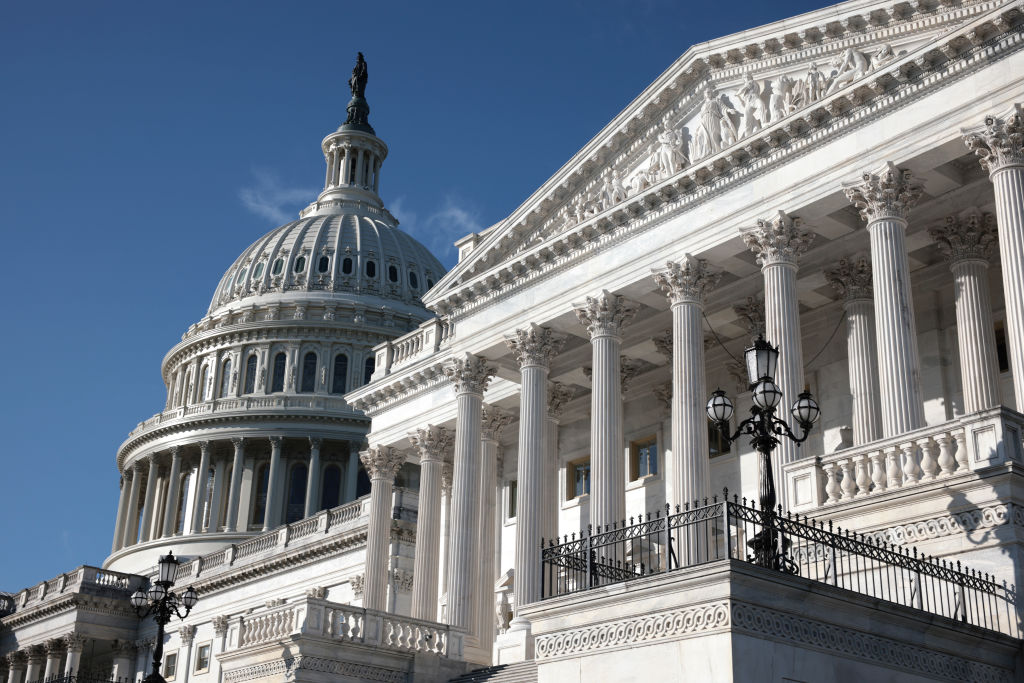(Photo by Anna Moneymaker/Getty Images)
WASHINGTON — Republicans are struggling to recruit and elect women to Congress, lagging behind Democrats in ensuring women, who make up half the population, have a strong voice in the halls of power, experts on women in politics said Tuesday.
“This year’s data shows clearly that Republican women are falling behind in candidacies, nominations and even primary contest success,” Debbie Walsh, director of the Center for American Women and Politics at Rutgers University in New Jersey, said on a call with reporters.
Democratic women, on the other hand, “are not only outperforming their male counterparts, but are also reaching near parity with Democratic men in nominations and office holding.”
The 435-member U.S. House currently has 126 women, 34 of whom are Republicans. The 100-member Senate has 25 female lawmakers, with nine belonging to the GOP.
CAWP Director of Data Chelsea Hill explained on the call that while women overall account for just 31.1% of general election nominees for the House, the breakdown shows a stark difference for Democratic and Republican politicians.
“Women continue to be significantly underrepresented as a percentage of all U.S. House and Senate candidates and nominees,” Hill said. “But Republican women are a significantly smaller percentage of their party’s candidates and nominees than are Democratic women.”
Democratic women running for the House represent 45.9% of candidates within their party, coming close to parity with their male colleagues and increasing female candidate percentages over 2022, she said.
Republican women, however, make up 16.2% of GOP House candidates this election cycle, a lower share than during 2020 and 2022, Hill said.
In the Senate, female candidates account for 30.9% of general election nominees, with a similar split between Democrats and Republicans.
Democratic women account for 46.9% of the party’s candidates for that chamber of Congress, also near parity, though women make up 17.6% of Republican Senate nominees, “a smaller share than in the three previous cycles,” according to Hill.
Why are fewer Republican women running?
CAWP experts said the difference in female candidates is predominantly due to structural differences as well as differing beliefs about the importance of women holding office among leadership and voters.
CAWP Director of Research Kelly Dittmar said if party leadership doesn’t believe women’s underrepresentation in government is a problem in need of a solution, that will make “it hard to build the type of support infrastructure — whether it be for women’s PACs, trainings, recruitment programs — that would ensure that those numbers stay high.”
Dittmar said one example of this was House Republican leaders’ decision to roll a program called “Project Grow” that was aimed at recruiting female GOP lawmakers into the “Young Guns” program, which is focused more on general recruitment.
“Young Guns” is also the title of a book published in 2010 by former House Republican leaders Paul Ryan, Eric Cantor and Kevin McCarthy, all of whom are men.
Dittmar said the evolution of the Republican Party under former President Donald Trump and the change in abortion access stemming from the U.S. Supreme Court’s decision to overturn Roe v. Wade in 2022 are not significant factors accounting for the lower numbers of female Republican candidates.
“I would suggest that when we get to the candidate level, there are enough conservative Republican women in the country that could be recruited and supported as candidates,” Dittmar said.
Walsh said one of the reasons GOP leaders don’t focus on recruiting and encouraging women in public office is that there is a “reluctance” within the Republican Party to engage in identity politics.
“The Democratic Party places value on that, versus the Republican Party, which says the best candidate will rise to the top and let the best person win,” Walsh said. “So it is a deeply philosophical difference that plays out in candidate recruitment, candidate support.”
Dittmar added that Democrats aren’t necessarily recruiting and advancing female candidates “out of the goodness of their hearts,” but are doing so because it’s expected by their voters.
“There’s an electoral incentive, partly due to the gender gap in voting, as well as racial and ethnic differences in terms of the Democratic base, where there is more demand on the Democratic Party to say, ‘Look, we’re bringing you votes, you need to prioritize and value this level of representation.’”

